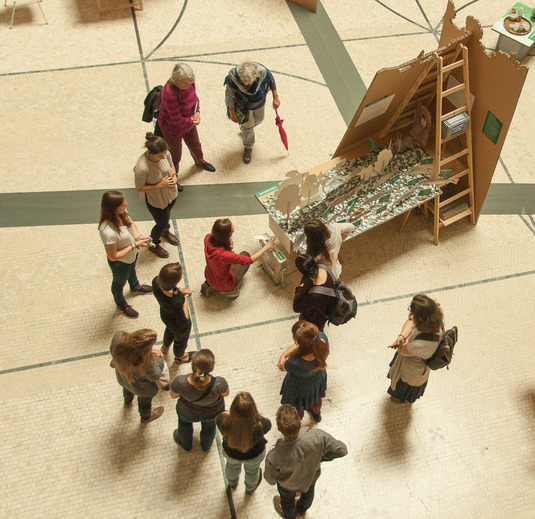Ecopolis Munich Exhibition/Munich and the Isar
The City Makes the River?
18.09.2017
This project by Luna Benitez Requena, Elisa Hanusch and Johannes Summer, students of the RCC-LMU Environmental Studies Certificate Program, stems from research conducted as part of the exhibition project “Ecopolis: Understanding and Imagining Munich’s Environments.”
People at the Isar. Photo Credit: Luna Benitez Requena.
For Munich residents, the unpredictable Isar was
for a long time one thing above all else: a threat.
As a result, from the eighteenth to twentieth centuries,
the river would be “tamed” by means of canals, weirs, and embankments.
Starting in the 1980s, perceptions of the Isar started to change.
With its concrete braces, it was hardly attractive.
Therefore, the 2000‒2011 Isar Plan made extensive efforts to
renaturalize those parts of the river within the city limits.
The goals were to improve flood management,
create a near-natural river landscape,
and increase the quality of leisure and recreation.
The 2013 flood, which affected large parts of Bavaria,
proved the success of these renaturalization measures.
Munich was largely spared from the flood’s effects.
The modernization of the Sylvenstein Dam and reservoir, located about
70 km south of the city, also ensured that Munich was protected from the damage.
Today, the newly created river landscape offers many advantages.
Both humans and animals are attracted to the natural beauty of the river scape:
humans go to the Isar to unwind from everyday stress, and
birds, fish, and countless microorganisms live there.
But at the same time, this supposed ideal of nature
is endangered by the intensive use of the Isar as a recreational area
and, thus, the habitat of many species is at risk.

The project at the Ecopolis Exhibition. Photo Credit: Florin Pruna.
A River Makes the City
The history of Munich could not be told without the Isar.
The river has played an important role since the city was founded in 1158.
For a long time, it posed an insurmountable obstacle for salt merchants
on their way from the Alps to Northern Europe.
With the construction of an overpass near what is today the Isar Bridge,
Henry the Lion, Duke of Bavaria, was able to divert the lucrative salt trade to Munich.
The revenue from the bridge toll laid the foundation for Munich’s prosperity.
As it was an important waterway, the Isar was crucial in driving
the city’s economic development.
Wood, stones, and lime were brought to Munich via the Isar
to supply the construction boom during the period of promoterism (Gründerzeit).
Around 1870, before the expansion of the railway network—
which brought about the decline of rafting—
Munich had the largest raft port in Europe.
The Isar not only functioned as a transport and trade route,
but also served as an important source of energy by
powering water wheels.
The river is still used to produce renewable energy today.
Garbage at the river. Photo Credit: Elisa Hanusch.

